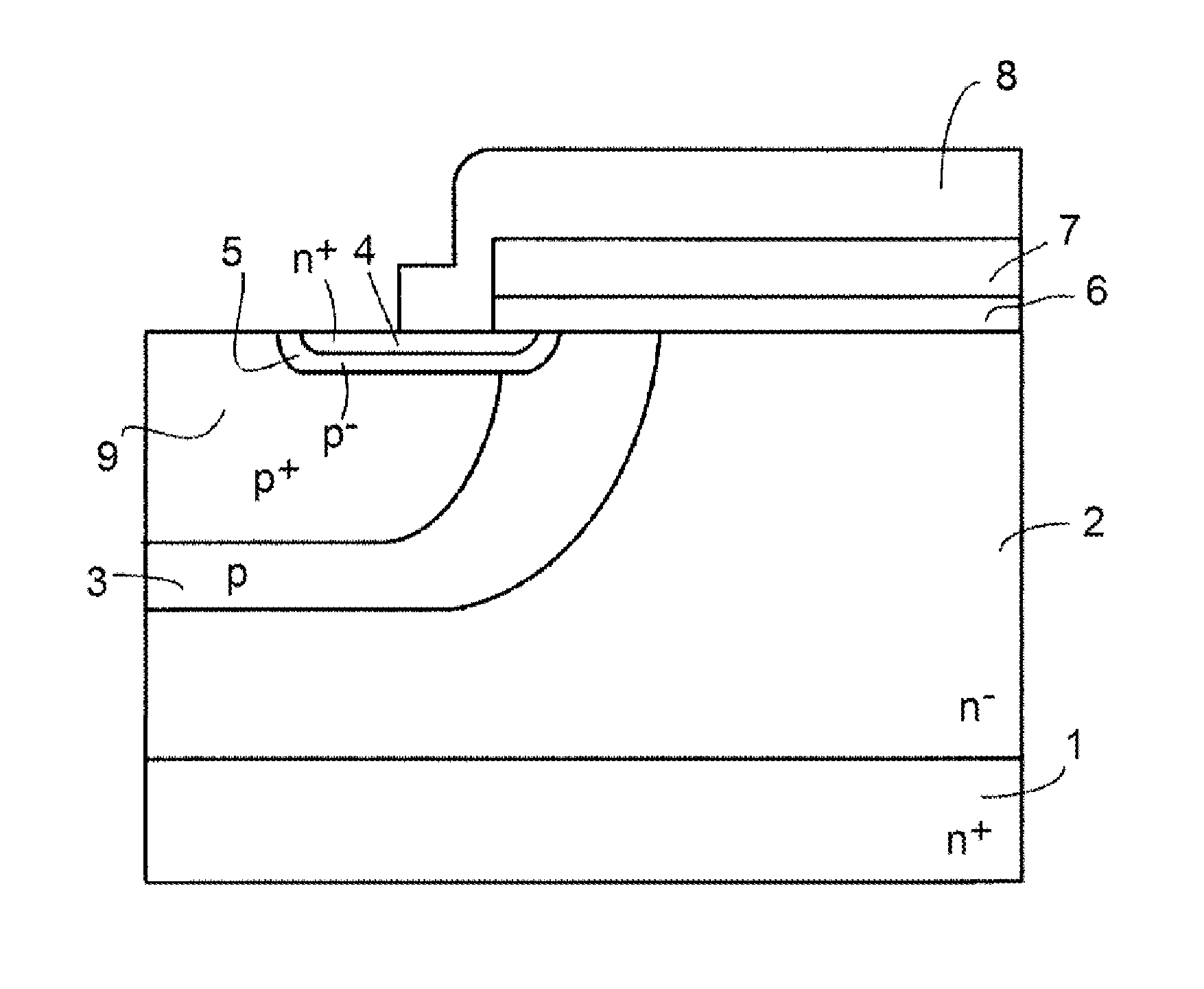Semiconductor device and method for manufacturing semiconductor device
a semiconductor and semiconductor technology, applied in the direction of semiconductor devices, electrical devices, transistors, etc., can solve the problems of reducing affecting the gate control, and limiting the film thickness of the gate insulator, so as to reduce the impurity concentration, increase the gate threshold voltage, and increase the diffusion coefficient
- Summary
- Abstract
- Description
- Claims
- Application Information
AI Technical Summary
Benefits of technology
Problems solved by technology
Method used
Image
Examples
embodiment 1
[0083]A semiconductor device according to Embodiment 1 of the present invention is now described with a power MOSFET, one of the MOS-type semiconductor devices, as an example. FIG. 1 is a cross-sectional diagram showing substantial parts of a surface MOS structure of the MOSFET according to Embodiment 1 of the present invention. A surface layer of the front surface of a semiconductor substrate corresponding to an n− layer 2 is selectively provided with a p-type well region 3. Inside the p-type well region 3 are an n+-type source region 4 and a p− region 5 selectively. The n+-type source region 4 is exposed on the front surface of the substrate. The p− region 5 is provided between the n+-type source region 4 and the p-type well region 3 and surrounds the n+-type source region 4. Further, a p+ contact region (not shown) is provided on the inside of the p-type well region 3 so as to be in contact with the p− region 5.
[0084]A front surface of a channel forming region 10 sandwiched betwe...
embodiment 2
[0098]Next is described a method for manufacturing a semiconductor device according to Embodiment 2 of the present invention, with reference to an example of manufacturing an re-channel MOSFET. FIGS. 15 to 22 are cross-sectional diagrams of substantial parts of a semiconductor substrate, each showing sequentially the steps of manufacturing a surface MOS structure of the MOSFET according to Embodiment 2 of the present invention. The difference between the method for manufacturing a semiconductor device according to Embodiment 2 and the method for manufacturing a semiconductor device according to Embodiment 1 is that the gate insulator 6 and the gate electrode 7 made of polysilicon are formed prior to forming the p-type well region 3 and the n+-type source region 4. In other words, masking with the gate electrode 7, the p-type well region 3, the n+-type source region 4, and the p− region 5 are formed by self-alignment in Embodiment 2, the p-type well region 3 being disposed where a ch...
embodiment 3
[0104]Next is described a method for manufacturing a semiconductor device according to Embodiment 3 of the present invention, with reference to an example of manufacturing an re-channel MOSFET. FIGS. 39 to 42 are cross-sectional diagrams of substantial parts of a semiconductor substrate, each showing sequentially the steps of manufacturing a surface MOS structure of a MOSFET according to Embodiment 3 of the present invention. The difference between the method for manufacturing a semiconductor device according to Embodiment 3 and the method for manufacturing a semiconductor device according to Embodiment 1 is that different resist masks are used to perform arsenic ion implantation 16 and phosphorus ion implantation 17. Specifically, the width of an n+-type source region 24 is made narrower than the width of a p− region 25 by narrowing the width of the opening between a resist mask and the oxide mask of the field oxide film 11 during the arsenic ion implantation 16 than in phosphorus ...
PUM
 Login to View More
Login to View More Abstract
Description
Claims
Application Information
 Login to View More
Login to View More - R&D
- Intellectual Property
- Life Sciences
- Materials
- Tech Scout
- Unparalleled Data Quality
- Higher Quality Content
- 60% Fewer Hallucinations
Browse by: Latest US Patents, China's latest patents, Technical Efficacy Thesaurus, Application Domain, Technology Topic, Popular Technical Reports.
© 2025 PatSnap. All rights reserved.Legal|Privacy policy|Modern Slavery Act Transparency Statement|Sitemap|About US| Contact US: help@patsnap.com



